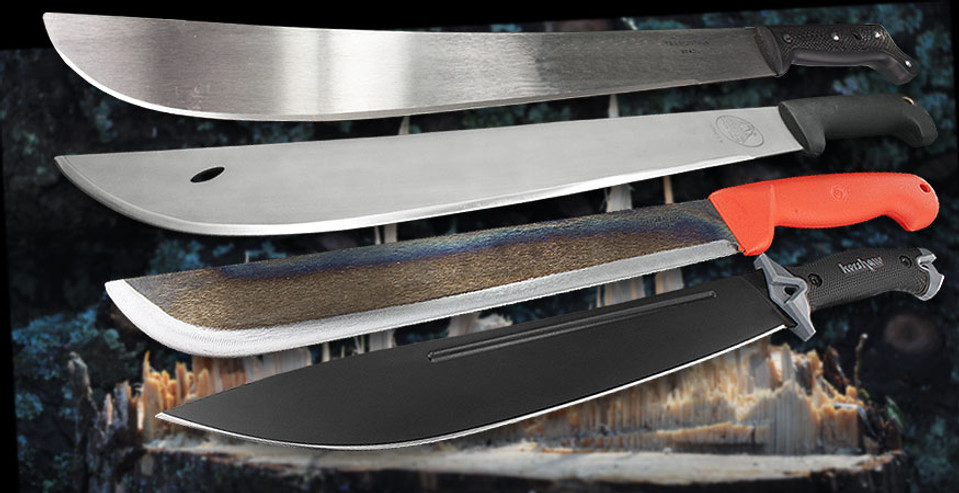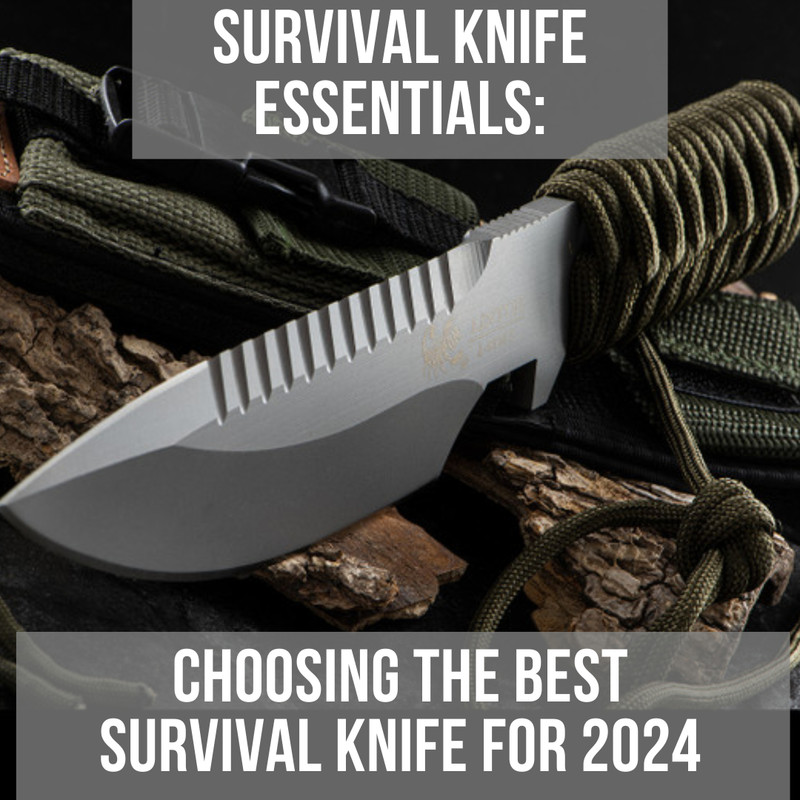Machetes – The Ultimate Buying Guide
Posted by HH on 7th May 2015
At Heinnie people constantly ask us about machetes, asking us a whole host of questions like: What should I look for in a machete? What are the best and worst features? What ones can you recommend for different prices?
Hopefully, we can answer some of these questions.
There are a number of things to consider when purchasing a machete.
- –Blade Style
- -Blade Length
- -Blade Composition
- -Tang
- -Handle Material
- -Handle Design
Blade Styles
For most people, the distinguishing characteristic of most machetes is the shape of the blade, which varies considerably depending on the use.
The machete is used in rural areas all over the world. Names and styles vary, and often overlap (For example the Kukri style is also known as the Rawit, and the Sable style is called variations of Golok depending on the region). Preferences for one style over another are often subjective, and like many other things, based in large part on tradition and experience.
Machete styles have never been standardized, and one style melds into another. At what point a bush machete becomes a bolo machete is anyone’s guess, so our categories are somewhat fluid.
Some of the most popular blade styles are:
Bush Machete: All-purpose machete. Blade tends to be evenly weighted and fairly stout. Can be fitted with a sheath easily for carrying around. Good for green vegetation and as a utility tool.
Bolo Machete: Workhorse of the machetes. A cross between an axe and a knife, the bolo is heavily weighted toward the tip of the blade for chopping thick and woody vegetation.
Kukri Machete: Kukri machetes have 3 parts to their blade, a pointed tip for penetration, a wide midsection for chopping, and a narrow area near the handle for whittling and carving.
Machete and Blade length
Most machetes range from 25cm to 70cm, with 45cm being about average. Smaller blades have less reach, but are more portable, and can have thicker blade, as we shall show you later in the blog. Longer blades are harder to transport, but are able to clear larger areas in less time, and allow you to generate increased centrifugal force, which will help generated increased power.
Machete Blade Composition
One of the biggest differentiators between machetes is the type of material with which the blade is made. The most common blade materials are stainless steel and carbon steel. High carbon stainless steel combines the advantages of both stainless and carbon steel.
Carbon Steel:
Advantages – Harder than stainless steel, also good edge sharpness retention.
Disadvantages – Needs regularly oiling to prevent rust. These can be harder to re-sharpen.
Stainless Steel:
Advantages – Stain resistant and requires less maintenance than Carbon Steel. Edge easy to re-sharpen.
Disadvantages – Softer than carbon steel. Edge retention is not as good as standard carbon steel versions.
High Carbon Stainless Steel:
Advantages – Has added corrosion resistance of stainless steel with the durability and strength of carbon steel.
Disadvantages – Still needs regular maintenance to prevent rusting. Not as easy to sharpen as stainless steel.
Tang
The tang is the part of the machete blade that extends into the grip and connects the blade and the handle together. See our Tang blog post for more information on tangs.
For a chopping and slicing implement swung with a great deal of force, you will find the vast majority of machetes you will have full tang blades. Occasionally you will find machetes without, this will mean the weight is by far distributed in favour of the blade end not handle end. This is most often found with smaller machetes where having a heavier blade will help generate increased power.
Handle Materials
Another consideration when picking your tool is what type of handle material to choose.
Wood – The big advantages of wooden grips are that they provide great, grip and comfort, they are strong and lightweight too, meaning that with proper upkeep will last a long time. However, if not properly maintained, contact with moisture can cause the handle to crack.
Polymer – These are great grips in terms of needing less maintenance, and often the cheapest of the handles to produce, so that saving is normally passed into the cost of the whole product. That being said these handles can get slippery, especially when used in wet conditions. There is also the potential of some discolouration on the handle with long-term use.
Rubber – These handles provide great grip! Varied patterns and textures aid in comfort and add visual appeal. Rubber grips will also help absorb some of the vibrations from machete use. The only potential drawback we see of these grips are that with increased use and time there is a possibility of the rubber, tearing or becoming less grippy.
Handle Design
Most machete handles have a simple design, with a hand guard to prevent the users hand from slipping onto the blade, and a hand stop at the base of the handle to prevent the users hand from slipping off the back and losing control of the blade.
Not all machetes have these, but if you are concerned that your hands may slip, then it’s definitely worth considering.
Another safety feature most machetes now seem to carry is a lanyard hole. This will allow you to attach paracord or shockcord between your wrist and the blade. This will give added security from the machete flying out of your hand.
Which Machete then?
As you have read above, the range of options are huge. However here are a few of our favourites that may appeal to you. . .
Condor El Salvador Machete
This is a lovely blade, well balanced and comfortable under hand. It has a long 47.5cm blade yet still feels very manoeuvrable and controlled. Hand fits nicely on the handle, and the hand guard and hand stop provide good protection from the potential of hand slip.
Kershaw Camp 14
A great piece of kit!! Looks the part, does the job even better! As you’d expect from Kershaw really well made, high quality materials. The handle shape and materials makes for really nice grip, even in wet conditions.
Tramontina Machete 45cm
This is a Brazillian made beauty! Another big machete, really lightweight and balanced. Lovely designed handle, with 4 pins fixing it to the blade, giving the user extra security for long-term use. As with the Condor, although this is a big blade it’s very easy to wield. Being a big blade allows for more centrifugal force to be generated, potentially giving greater power and force between each swing.
Svord Kiwi Machete
The smallest of the machetes seen here, however that does not take away from the brilliance of it. Distinctive in colour and the carbon steel blade looks great! Bright orange, so no excuse for misplacing it. Good weight and slightly front end heavy to help improve the power that can be generated from a smaller blade.
Cold Steel Latin Machete
This is the heaviest machete Cold Steel make. The blade widens dramatically toward the tip for maximum cutting and chopping power. That combined with the over 45cm blade and you’ve got a machete designed for business. It’s not an especially good looking knife, but it’s by no means an eye-sore. The handle is big and comfy, with hand bit hand stop to prevent hand slip.







